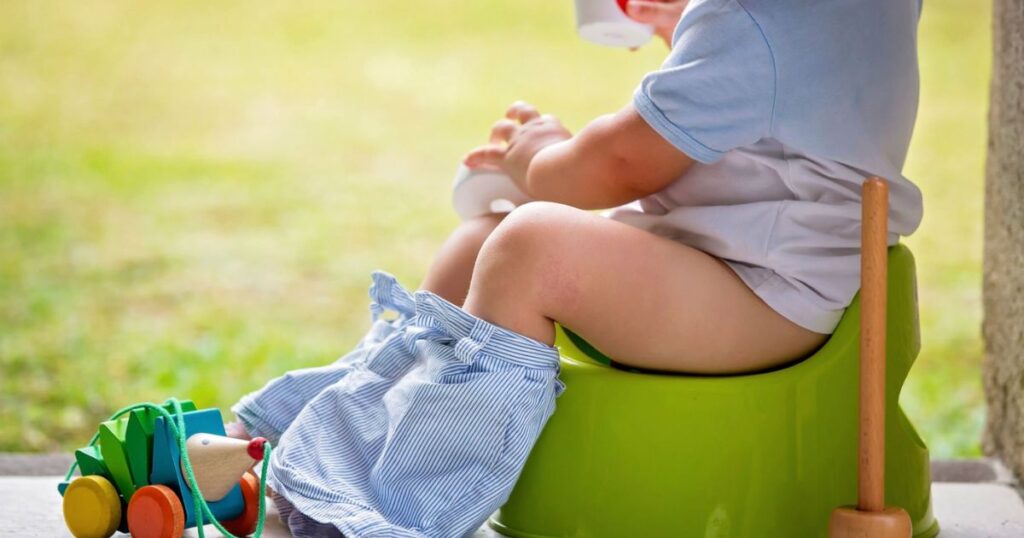Navigating the nuances of potty training can be both perplexing and amusing for parents. One common dilemma is whether to teach a boy to pee standing or sitting. Let’s explore the considerations and benefits of each approach to ease this parenting conundrum.
The age-old debate of standing versus sitting during potty training for boys has puzzled parents for generations. Beyond the whimsical notion of aiming accurately, factors like independence, hygiene, and personal preference play vital roles in shaping this crucial milestone.
While tradition may lean towards standing, sitting during potty training can foster better hygiene, prevent mess, and encourage an early sense of independence. Parents should gauge their child’s readiness, offering guidance while respecting their inclination for a smoother and successful transition.
Considering Potty Training Options for Boys

When deciding how to potty train boys, parents often weigh the choice between standing or sitting. Some opt for standing, emphasizing early independence. The question “Do You Potty Train A Boy Standing Or Sitting?” naturally arises during this decision-making process, prompting caregivers to consider what approach aligns best with their child’s needs and developmental readiness.
Exploring potty training options involves understanding the benefits of each approach. Standing can empower boys and foster a sense of autonomy.
Exploring the Standing vs. Sitting Dilemma
Potty training boys brings up the standing versus sitting debate. Some parents wonder if it’s better for their little one to pee standing up like dad or sitting down like mom.
Standing might seem traditional, but sitting can be neater, especially for beginners. It reduces the chances of accidental mess and promotes better hygiene.
Benefits of Standing Potty Training for Boys
Standing potty training for boys has several advantages. Firstly, it promotes a sense of independence, allowing them to mimic older male figures.
Moreover, the standing position aligns with the way boys naturally urinate, making the transition from diapers to using the toilet more seamless.
Advantages of Sitting Potty Training Approach
Opting for a sitting potty training approach offers various advantages. Firstly, it promotes better hygiene as there is minimal risk of urine splatter. Additionally, sitting down provides a more relaxed and focused environment for toddlers, aiding in their overall understanding of the process. Parents may also wonder, “Does ADHD Affect Potty Training?” as they navigate this developmental milestone, considering how individualized strategies may be necessary for children with unique needs.
Moreover, the sitting position during potty training fosters a feeling of security and comfort for the child. It eliminates any concerns about balance or coordination, creating a stress-free atmosphere.
Navigating Hygiene Concerns in Potty Training
Maintaining hygiene during potty training is crucial for a smooth transition. Teach your child the importance of washing hands with soap after each bathroom visit.
Additionally, consider using flushable wipes for thorough cleaning. These can be more effective than toilet paper, especially for toddlers. Make the bathroom environment child-friendly with colorful soap dispensers and engaging hand towels to turn hygiene routines into positive experiences
Encouraging Independence in Boys’ Potty Training
Instilling independence in boys’ potty training is vital for their development. Begin by choosing a child-friendly potty and placing it within their reach.
Additionally, let them choose their favorite toilet paper or soap, making the process more enjoyable. Gradually transition to standing or sitting based on their comfort, ensuring they feel in control
Tailoring Potty Training Methods to Your Child’s Needs.
When it comes to potty training, it’s important to tailor your approach to suit your child’s unique needs and preferences. Every child is different, so what works for one may not work for another.
Create a supportive environment by introducing fun and engaging elements. Use colorful and child-friendly potty training tools, books, or songs
FAQs
Do I potty train my boy standing or sitting?
You can choose based on preference, but sitting is often easier for starters, promoting better hygiene and minimizing mess.
When should I introduce standing during potty training?
Introduce standing when your boy shows interest or displays better control, usually as they become more confident with potty habits.
How do I know if my boy is ready for standing potty training?
Look for signs like interest, stability, and improved coordination. Start with sitting and gradually introduce standing as they gain confidence.
Conclusion
The choice between standing and sitting during potty training for boys is a personalized decision. By considering factors like hygiene, independence, and a child’s readiness, parents can navigate this developmental milestone, fostering a positive and tailored experience for both parent and child.










